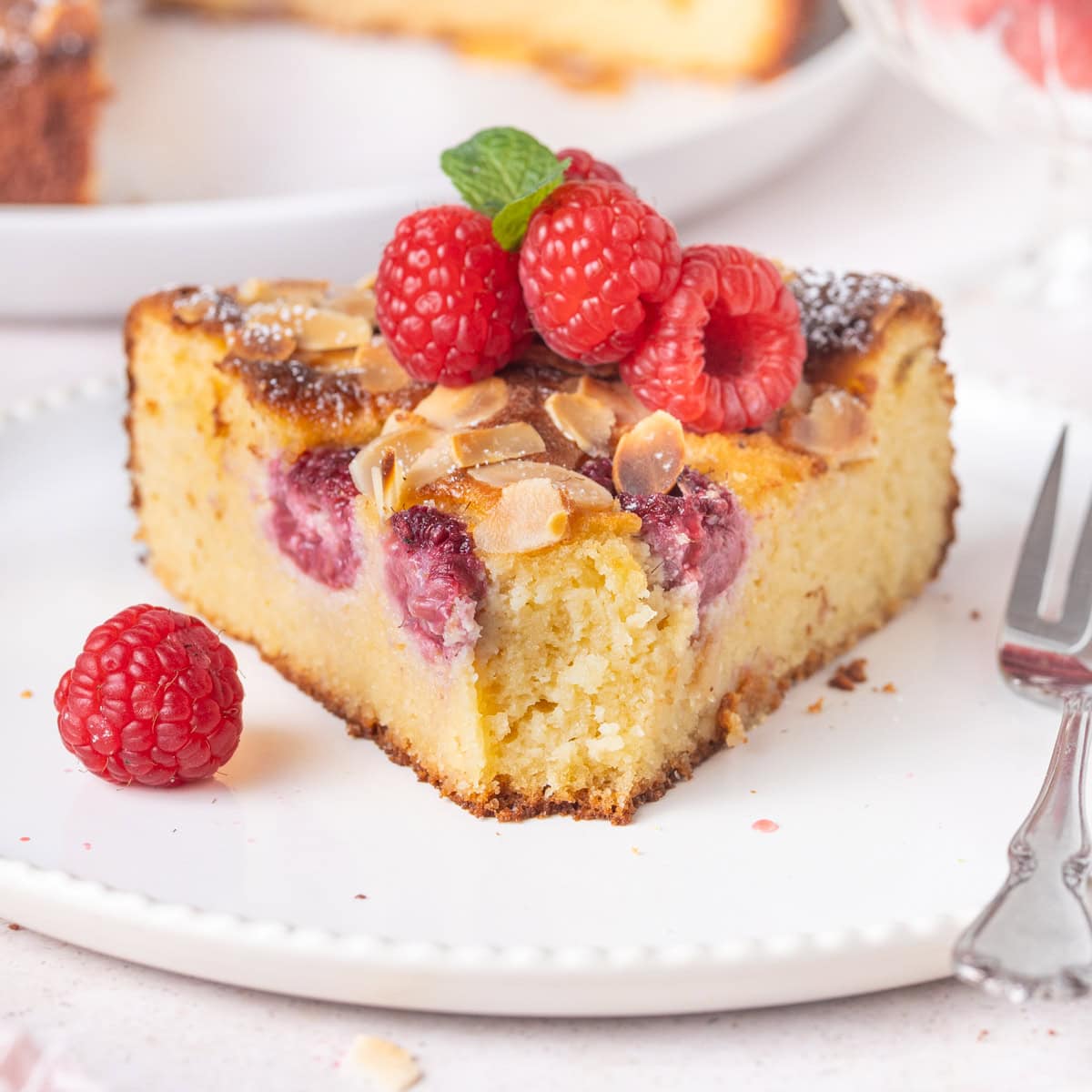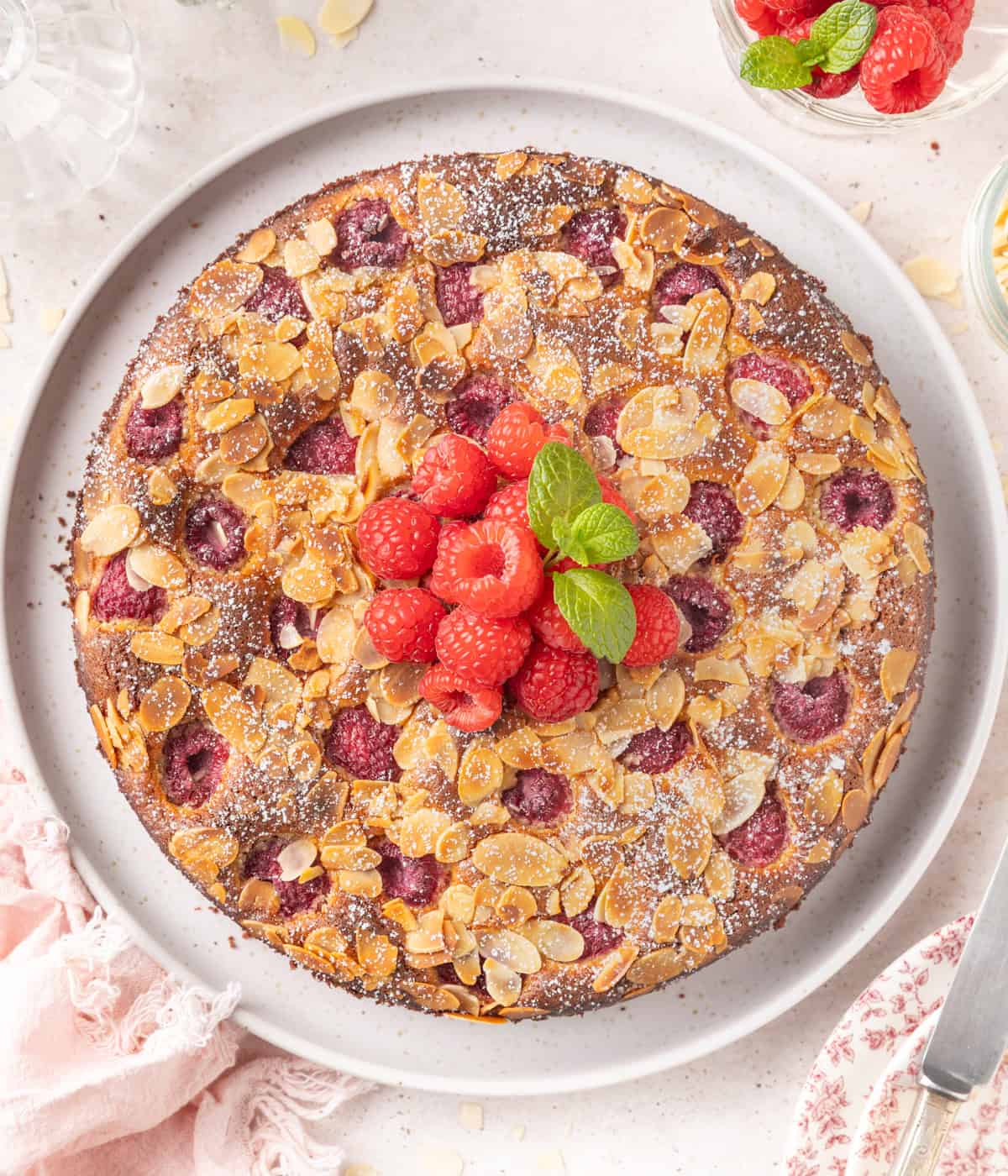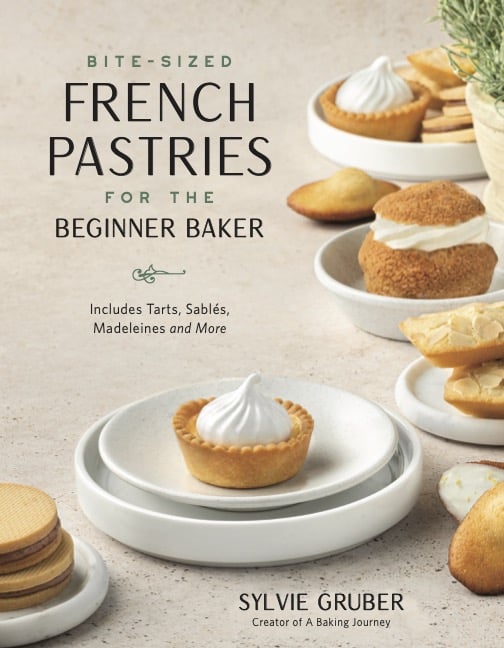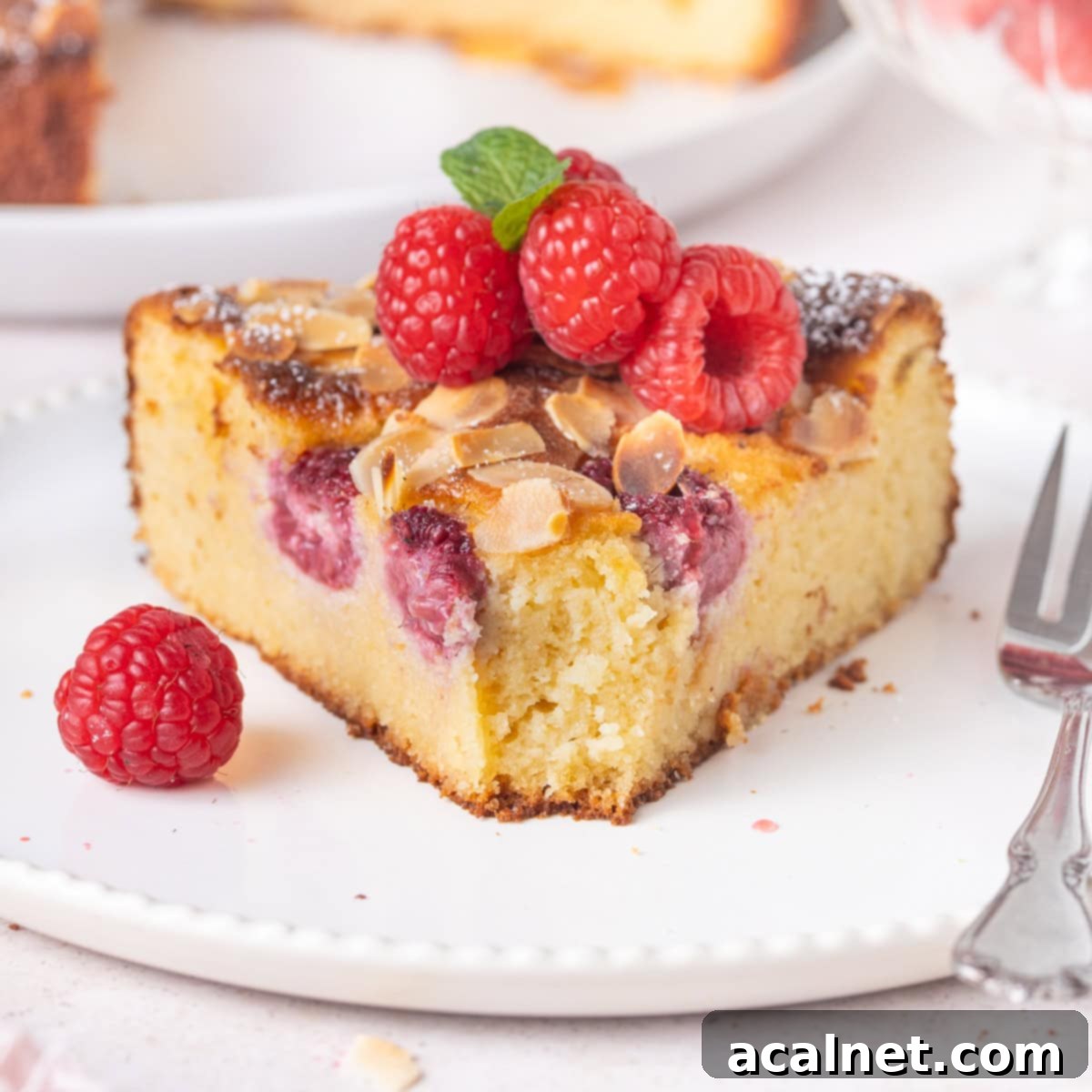Flourless Almond Raspberry Cake: Your Guide to a Deliciously Easy & Gluten-Free Dessert
Indulge in the exquisite pleasure of a Flourless Almond Raspberry Cake, a truly delightful dessert that boasts a wonderfully light and soft texture, bursting with fresh berry flavor. This naturally gluten-free masterpiece harmoniously blends the moist richness of almond meal with the sweet-tart goodness of melt-in-your-mouth raspberries, all crowned with a delicate crunch of flaked almonds. It’s the quintessential treat for any season, especially perfect as a refreshing summer dessert or an elegant afternoon tea accompaniment.

The inherent sweetness of almonds perfectly complements the bright, tangy burst of fresh raspberries, a flavor combination truly made in heaven – much like our popular Raspberry Frangipane Tartlets. What makes this cake so exceptionally moist and fluffy is its generous proportion of almond meal. This high ratio not only contributes to its incredibly tender crumb but also ensures a rich, nutty flavor that forms the perfect backdrop for the vibrant berries.
Each bite offers a delightful contrast: the delicate, sweet crumb from the almond meal is perfectly balanced by the zingy freshness of raspberries. And to elevate the experience further, the addition of toasted flaked almonds provides a fantastic textural crunch, culminating in a truly satisfying and naturally gluten-free cake that everyone will adore.
Explore more delicious almond cakes:
- Strawberry Almond Cake
- Orange Almond Cake
- Apple Almond Cake
- Pear Almond Cake
Essential Ingredients for Your Almond Raspberry Cake
Crafting this irresistible Almond Raspberry Cake requires a handful of simple, high-quality ingredients. Here’s what you’ll need to create this flourless wonder:

For precise measurements, please refer to the detailed recipe card below!
- Eggs: You’ll need large eggs, with the yolks and whites carefully separated into two distinct large bowls. Don’t worry about bringing them to room temperature; they can be used straight from the fridge. Separating them while cold can actually be easier, as the yolks are firmer.
- Sugar: Caster sugar or a fine white granulated sugar is ideal for this recipe. Its fine crystals dissolve quickly, contributing to the cake’s delicate texture. The sugar will be divided in half, one portion for stabilizing the egg whites and the other for sweetening the egg yolks.
- Oil: A neutral-flavored oil like Canola Oil or Grapeseed Oil is recommended. It helps keep the cake incredibly moist and tender. While melted butter can be substituted for flavor, please note that butter-based cakes tend to dry out more quickly than those made with oil.
- Cream: Opt for thickened or heavy cream, ideally with a fat content between 30% and 35%. This adds richness and moisture. For a dairy-free version, a non-dairy cream alternative can be used, but be mindful of its flavor, as it will influence the final taste of the cake.
- Almond Meal: I prefer blanched and skinned almond meal for its slightly coarser texture, which adds a lovely crumb to the cake. Almond flour, which is usually ground more finely, can also be used as a substitute, but the texture might be slightly different. Both are excellent naturally gluten-free options.
- Raspberries: Fresh raspberries are highly recommended for their vibrant flavor and ability to hold their shape, providing beautiful pockets of fruit throughout the cake. While frozen raspberries can be used, they tend to release more moisture and may “melt” into the cake more, altering the texture slightly. If using frozen, thaw and pat them very dry beforehand.
To further enhance the cake’s delightful flavors, a touch of vanilla extract is added. While almond extract could also be used, with such a substantial quantity of almonds already present in the cake, it’s generally not necessary to boost the almond flavor further.
How to Bake Your Perfect Raspberry Almond Cake
Creating this flourless almond raspberry cake is a straightforward and rewarding process. Follow these detailed steps to achieve a beautifully light, moist, and flavorful dessert.

- Preparation: Begin by preheating your oven to 180℃ / 350 ℉. Prepare a 22 cm (8.5-inch) Springform Pan by lining its bottom with baking paper or parchment paper. This prevents sticking and ensures easy removal.
- Set Up Mixing Bowls: If you’re using a stand mixer, make sure you have two large bowls and the whisk attachment ready. For a hand mixer, simply prepare two large mixing bowls.
- Separate Eggs (Photo 1): Carefully separate the egg yolks from the egg whites. Place the egg yolks in one bowl and the egg whites in the other. Set the bowl with egg yolks aside for now.
- Add Sugar to Whites (Photo 2): To the bowl containing the egg whites, add approximately half of the measured caster sugar. This sugar helps to stabilize the egg whites, creating a more robust meringue.
- Whisk Egg Whites (Photo 3): Start whisking the egg whites and sugar on medium speed. Gradually increase the speed to high and continue whisking until stiff peaks form. This means when you lift the whisk, the egg whites hold their shape firmly. Once achieved, set the bowl aside at room temperature or in the fridge.
Using some sugar with the egg whites is a crucial step for stabilization. This technique helps ensure the egg whites maintain their volume and don’t deflate excessively when they are gently folded into the heavier cake batter, contributing to the cake’s light and airy structure.
- Add Sugar to Yolks (Photo 4): Now, return to the bowl with the egg yolks and add the remaining half of the sugar. There’s no need to clean your whisk attachment between whipping the whites and yolks; the trace amounts of egg white won’t negatively impact the yolk mixture.

- Whisk Yolks and Sugar (Photo 5): Whisk the egg yolks and sugar together on medium speed for about 2 to 3 minutes. The mixture should increase in volume and lighten in color to a pale yellow, becoming thick and creamy.
- Incorporate Wet Ingredients (Photo 6): Add the neutral oil, heavy cream, and vanilla extract to the whisked egg yolk mixture. Continue whisking gently until all these wet ingredients are fully combined.
- Add Dry Ingredients (Photo 7): Gently whisk in the almond meal and a pinch of fine table salt into the egg yolk mixture. Mix just until combined. At this stage, you will notice the mixture becoming quite thick and coarse as the almond meal begins to absorb the liquids.
It’s important to act relatively quickly after adding the almond meal. Almond flour or meal tends to absorb liquids rapidly, causing the batter to thicken. If you wait too long before folding in the egg whites, the batter will become very dense, making it much harder to incorporate the airy egg whites without deflating them, which is essential for the cake’s rise and light texture.
- Fold in Egg Whites (Part 1 – Photo 8): Take about a third of your prepared whipped egg whites and add them to the almond mixture. Using a spatula, very gently fold the egg whites into the batter. The goal is to incorporate them without losing too much air, so use a light, lifting motion.

- Fold in Remaining Egg Whites (Photo 9): Add another third of the whipped egg whites and continue to fold gently. Repeat this process with the final third until all the egg whites are fully incorporated. You should now have a light, airy, and fluffy cake batter.
- Fill the Pan (Photo 10): Carefully pour the delicate batter into your prepared springform pan. Spread it evenly using your spatula if needed.
- Top with Berries and Nuts (Photo 11 & 12): Evenly scatter the fresh raspberries over the top of the batter. Then, sprinkle the flaked almonds generously over the raspberries.
- Bake to Golden Perfection: Bake for 30 to 40 minutes. The cake is ready when it has risen beautifully, looks golden brown, and a gentle shake of the pan reveals no movement in the center. An inserted wooden skewer should come out with moist crumbs, but not wet batter.
- Cool Completely: Once baked, transfer the cake pan to a wire rack and allow the cake to cool for at least an hour before attempting to remove it from the pan.
It’s vital to allow this almond raspberry cake to cool completely before handling or slicing. The crumb of this flourless cake is incredibly delicate and soft when warm, relying on its structure to firm up as it cools. Patience will be rewarded with a perfectly stable and delicious slice.

Frequently Asked Questions About This Cake
While fresh raspberries yield the best aesthetic and textural results, frozen raspberries can certainly be used. For optimal performance, it’s crucial to thaw them completely first. Once thawed, thoroughly drain any excess liquid and gently pat them dry with paper towels to remove as much moisture as possible. This minimizes the risk of the extra water seeping into the cake batter and altering its texture.
Almond meal and almond flour are often used interchangeably, but there’s a subtle distinction.
– Almond flour is typically made from blanched (skinless) almonds that are very finely ground into a powder, similar in consistency to wheat flour.
– Almond meal is traditionally made from whole almonds (with their skins on) and ground into a slightly coarser powder. However, many brands now sell “almond meal” that is also made from blanched, skinned almonds, with the primary difference being the coarseness of the grind. For this recipe, either will work, but a slightly coarser almond meal can add a lovely subtle texture to the cake.
The only dairy ingredient in this recipe is the heavy cream. You can easily make this cake dairy-free by substituting it with a plant-based, dairy-free alternative. Be aware that creams with strong flavors, such as coconut cream, might impart their taste to the cake. For the most authentic flavor, try to find a neutral-tasting non-dairy cream substitute if possible.
This raspberry almond cake is wonderfully delicious on its own, simply dusted with a little powdered sugar and garnished with a few fresh raspberries. For an extra special touch, consider pairing it with a scoop of Mascarpone Ice Cream.
You could also elevate your serving with a variety of delightful dessert sauces:
- A vibrant Raspberry Coulis
- A comforting Raspberry Compote or Mixed Berry Compote
- Light and airy Chantilly Cream
- A classic Crème Anglaise
- Even some homemade Raspberry Curd for a zesty twist!
A common reason for a cake sinking, especially a flourless one, is that the egg whites were not properly whisked to stiff peaks, or they were deflated during folding. Ensure your egg whites are firm and stable. Also, underbaking can cause sinking; make sure the cake is fully cooked through by checking for golden edges and a stable center.
Absolutely! While raspberries are fantastic, this cake is very versatile. You can swap them for other fresh berries like blueberries, blackberries, or chopped strawberries. A mix of berries would also be lovely! Adjust the quantity slightly if using larger fruits to ensure even distribution.

Pro Tips & Troubleshooting for Success
- Whipping Egg Whites First: We prioritize whipping the egg whites before mixing the almond batter. Almond meal is highly absorbent and tends to thicken rapidly once combined with liquids. If you were to prepare the almond batter first, it would become quite dense and stiff by the time you’re ready to fold in the egg whites. This sequence makes it much easier to incorporate the delicate egg whites without deflating them, which is critical for the cake’s light and airy rise.
- Gentle Folding is Key: When incorporating the whipped egg whites into the almond mixture, practice a very gentle folding technique using a spatula. This cake relies entirely on the air whipped into the eggs for its rise, as there is no all-purpose flour or baking powder in the recipe. Aggressive mixing will cause the air to escape, resulting in a dense cake. Use a light, lifting motion from the bottom to the top of the bowl, rotating the bowl as you go.
- Mix and Match Your Berries: Don’t limit yourself to just raspberries! This recipe is incredibly versatile. Feel free to swap some (or all) of the raspberries for other fresh berries such as blueberries, blackberries, or thinly sliced strawberries. For a specific variation, be sure to check out my Strawberry Almond Cake recipe!
- Don’t Overmix the Almond Batter: Once you add the almond meal to the wet ingredients, mix only until just combined. Overmixing can develop the gluten-like proteins in the almonds (even though it’s gluten-free flour) and lead to a tougher cake texture.
- Achieving Perfect Golden Color: Keep an eye on the cake during the last 10-15 minutes of baking. If you notice the top browning too quickly before the inside is fully cooked, you can loosely tent the cake with aluminum foil to prevent further browning while it finishes baking.
Storing & Freezing Your Cake
To keep your delicious raspberry almond cake fresh, it can be stored at room temperature for up to three days. Simply ensure it’s well-covered with plastic wrap or aluminum foil, or transferred into an airtight container to prevent it from drying out.
While some cakes freeze well, I generally do not recommend freezing this particular flourless almond raspberry cake. The delicate, fluffy, and moist texture that makes it so special tends to diminish after freezing and thawing, often becoming slightly dry or crumbly. For the best experience, enjoy it fresh within a few days of baking!

More Raspberry Desserts You’ll Love
If you’re a fan of the bright and tangy flavor of raspberries, you’re in for a treat! Here are some more delightful raspberry dessert recipes to inspire your next baking adventure:
- Pistachio Raspberry Loaf Cake
- Raspberry Mousse Cups
- Chocolate Raspberry Tart
- Lemon and Raspberry Loaf Cake
- Classic Raspberry Tart
- Easy Raspberry Panna Cotta
- Chocolate Raspberry Brownies
I am so excited to share that my debut cookbook
“Bite-Sized French Pastries for the Beginner Baker”
is now available for purchase!

Full Recipe Details

Almond Raspberry Cake
Print Recipe
Ingredients
- 4 large Eggs
- 120 gr Caster Sugar, divided in half
- 120 ml Neutral Oil, such as canola or vegetable oil
- 120 ml Thickened / Heavy Cream
- 1 1/2 teaspoon Vanilla Extract
- 250 gr Almond Meal
- 1 pinch Fine Table Salt
- 200 gr Fresh Raspberries
- 25 gr Flaked Almond
Instructions
- Preheat your oven on 180℃ / 350 ℉. Line a 22 cm / 8.5 inch Springform Pan with baking paper.
- Separate the Eggs, putting the egg yolks in one large bowl and the egg whites in a separate large bowl. Set aside the bowl with the egg yolks.
- Add about half of the sugar to the egg whites (see note 1). Using a hand mixer (or stand mixer fitted with the whisk attachment), start whisking the egg whites on medium speed. Slowly increase the speed until you reach stiff peaks. Set aside.
- Add the remaining of the sugar to the bowl with the egg yolks. Whisk on medium speed for 2 to 3 minutes or until increased in volume and turned a pale yellow colour.
- Mix the oil, cream and vanilla into the egg yolks. Add the almond meal and salt and whisk until just combined. You should get a thick, coarse mixture (see note 2).
- Add about a third of the whipped egg whites to the almond mixture. Using a spatula, very gently fold until most of the egg whites have been incorporated. Add another third of the egg whites and gently fold. Repeat the process until all the egg whites have been incorporated. You should get a light and fluffy batter.
- Pour the batter into the prepared springform pan. Top with the fresh raspberries then the flaked almonds.
- Bake for 30 to 40 minutes or until the cake has risen nicely and looks golden. If you gently shake the cake pan, you shouldn’t see any movement in the centre of the cake.
- Place on a cooling rack and leave to cool down completely before removing from the pan. Optionally, dust with icing sugar before serving.
Would you like to save this recipe?
We’ll email this post to you, so you can come back to it later!
Notes
- We are using some of the sugar with the egg whites as a way to stabilise them. This will insure they don’t deflate too much when folded into the rest of the cake mixture.
- At this point, the almond mixture will start to thicken as the almonds absorb the liquids. Don’t wait too long to incorporate the egg whites or it will be much harder to do so without deflating them.
Nutrition (per serving)
Made this recipe?
Let us know if you liked it by leaving a comment below, and tag us on Instagram @a.baking.journey with a photo of your creation!
